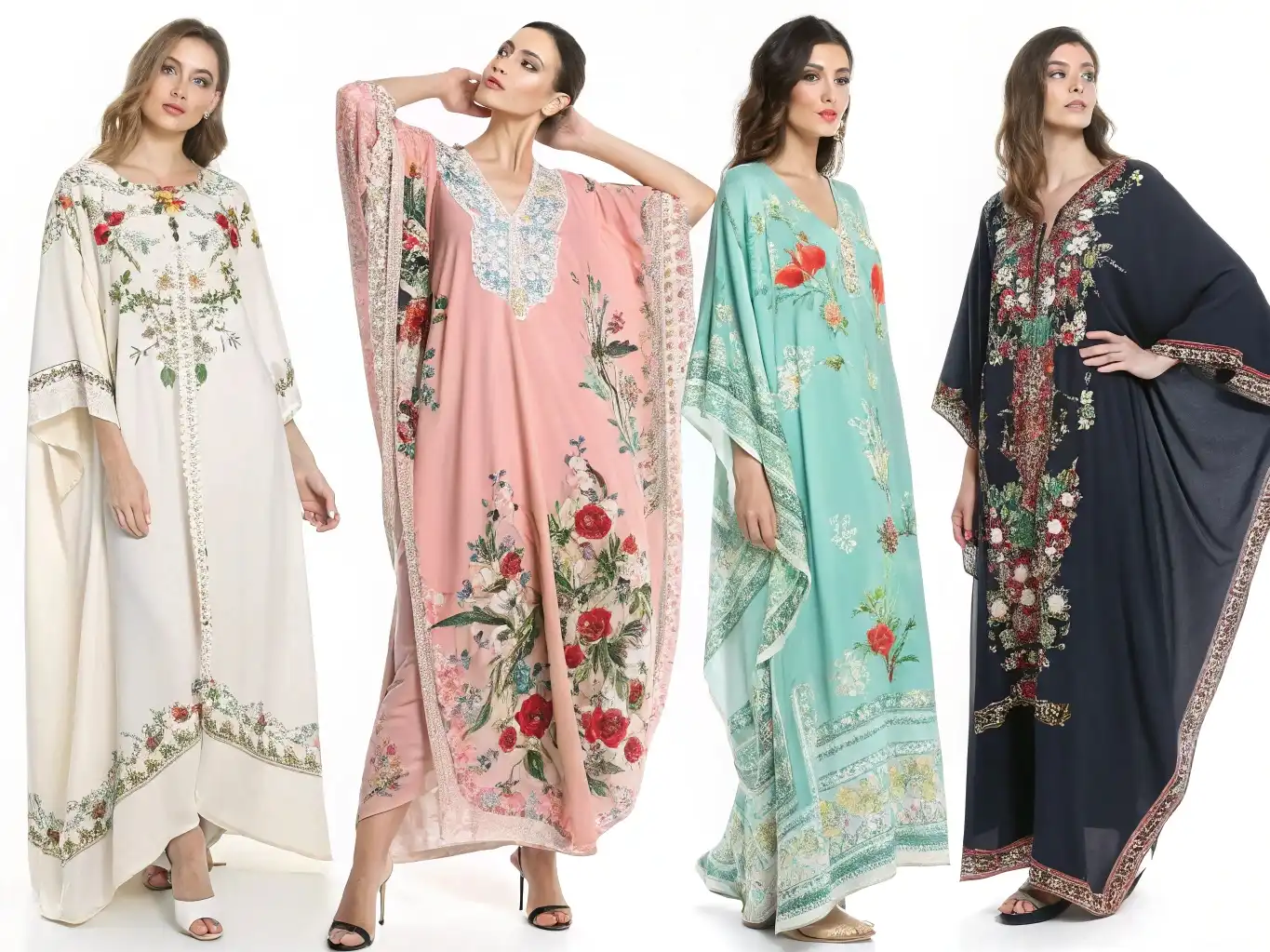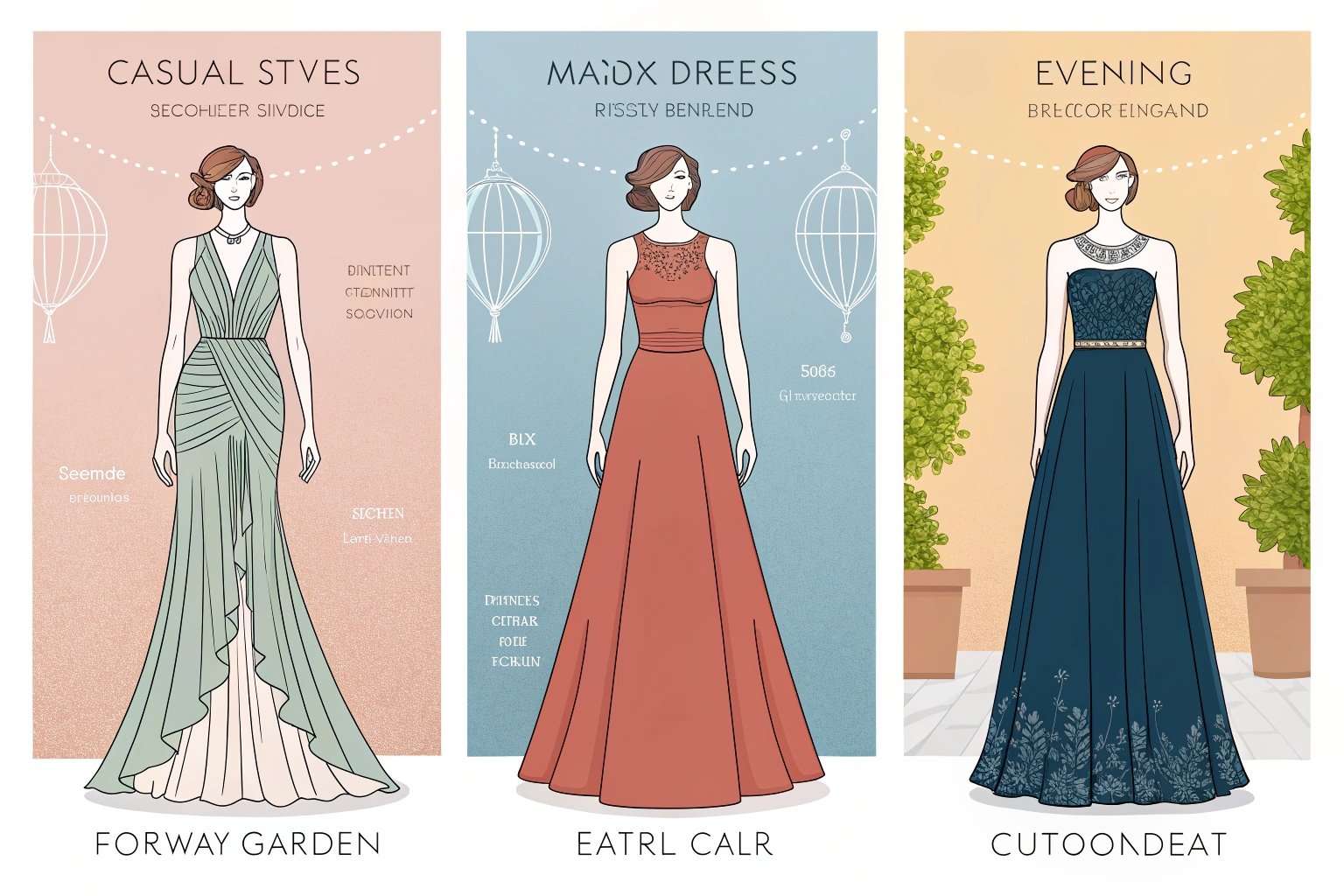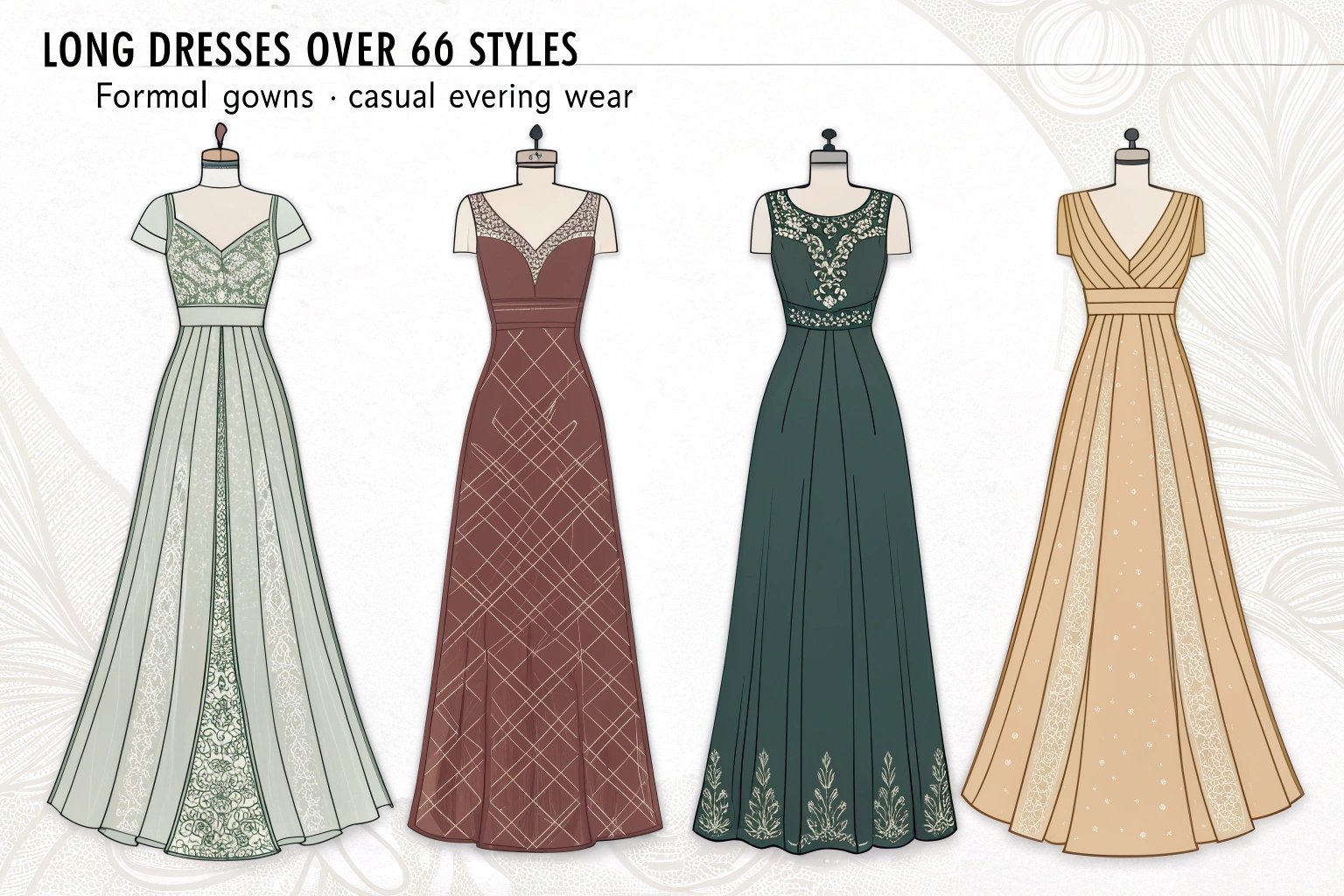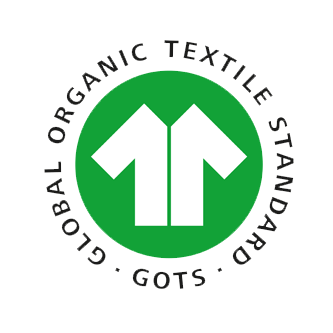I know the pain of tees that feel flimsy, shrink fast, or print poorly. The fix starts with GSM. Pick the right weight and most problems disappear. Pick wrong and you fight returns, bad handfeel, and waste.
GSM (grams per square meter)1 measures fabric mass per area. For cotton tees, 135–155 GSM suits light summer wear, 165–185 GSM fits daily retail basics, and 200–260+ GSM builds premium, boxy, or winter styles. The “best” GSM depends on climate, silhouette, print method, and your buyer’s expectations.
I learned this after a summer drop failed from transparency and twisting. Since then, I never place a PO without a GSM target, tolerance, and lab tests to match.
What Does GSM Mean in T‑Shirt Manufacturing—and How Do I Calculate It?
GSM is simple, but it drives feel, opacity2, and cost. If I control GSM, I control how the tee lives on the body and under the printer.
GSM equals the fabric weight of one square meter. I cut a 100 cm² swatch, weigh it, then multiply by 100. A clear GSM spec with a ±5–7% tolerance keeps lots consistent across mills and seasons, which protects fit, drape, and price.
Step‑by‑Step GSM Check
- Cut 100 cm² with a GSM cutter (0.01 m²).
- Weigh in grams on a calibrated scale.
- GSM = grams × 100 (e.g., 1.72 g → 172 GSM).
- Repeat 5 cuts across roll. Record min/max and average.
GSM Bands and Behavior
| GSM band | Handfeel | Opacity | Drape | Typical knit | Common use |
|---|---|---|---|---|---|
| 120–150 | Airy, cool | Lower | Fluid | Single jersey 30s | Summer, layering, promo |
| 160–190 | Balanced | Good | Stable | Single jersey 24s–26s | Daily retail basics |
| 200–230 | Firm | High | Boxy | Compact jersey / interlock | Streetwear, heavy basics |
| 240–280 | Dense, warm | Very high | Structured | Interlock / heavy jersey | Premium or winter tees |
Yarn, Knit, and Finish Matter Too
- Ring‑spun, combed yarns feel softer at the same GSM than open‑end yarns.
- Compact finishing tightens the surface, improves print edges, and boosts perceived weight.
- Bio‑polish removes fuzz, which helps DTG and water‑based inks.
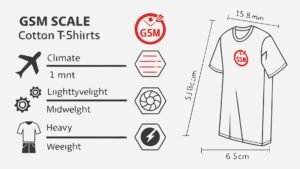
What GSM Range Is Best for Summer, Daily Basics, and Premium/Winter T‑Shirts?
I choose a range, not one number. Then I lock a tolerance so production cannot drift between dye lots.
For lightweight summer tees I aim for 140–155 GSM. For all‑season retail basics I use 165–185 GSM. For premium, boxy, or winter tees I select 200–240+ GSM, often in compact jersey or interlock to keep hems clean and prints sharp.
Use‑Case → GSM Planner
| Use case | GSM target | Yarn/Knit | Notes |
|---|---|---|---|
| Tropical summer / layering | 145 ±5 | 30s ring‑spun single jersey | Lighter colors may need tighter knit for opacity |
| Everyday retail basic | 175 ±7 | 24s–26s ring‑spun, compact | Best balance of hand, opacity, cost |
| Streetwear boxy | 210–230 | Compact jersey / interlock | Structured drape, crisp screen prints |
| Winter / premium | 230–260 | Interlock / heavy jersey | Warmth, luxe feel; pair 1×1 rib collar |
| Promo / event | 150–160 | Open‑end jersey | Budget; check spirality and print show‑through |
Climate and Silhouette Adjustments
- High humidity: drop 10–15 GSM to keep comfort.
- Oversized blocks: add 10 GSM for body control.
- Women’s drape tees: subtract 5–10 GSM for flow.
How Does a Tops Manufacturer Help Me Pick the Right GSM—and Prove It?
I start with your channel, climate, silhouette, and print plan. Then I shortlist fabrics and run tests before you spend a dollar on bulk.
Intended use drives GSM: casual retail needs balance; sports crossovers need moisture control; promos need price stability. I verify GSM, shrinkage3, spirality4, pilling, and colorfastness5 with lab and line tests so the approved handfeel survives production.
From Brief to Signed‑Off Fabric
1) Translate Intent → Spec
- Casual retail: 170–180 GSM, ring‑spun, compact, enzyme finish.
- Sports crossover: 160–175 GSM, cotton/poly (60/40 or 52/48) with wicking finish.
- Promo: 150–160 GSM, open‑end; confirm color list and cost.
2) Tests I Run (and Targets)
| Test | Why | Target / Pass |
|---|---|---|
| GSM (5 cuts) | Weight consistency | ±5–7% in‑lot |
| Shrinkage (wash/dry) | Fit after care | ≤4% L/W |
| Spirality | Side‑seam twist | ≤3% |
| Pilling (Martindale) | Surface life | Class ≥4 @5k rubs |
| Burst/Tear | Seam durability | Meets size‑based spec |
| Crocking / Colorfastness | Print + wear | Dry ≥4, Wet ≥3.5 |
3) Pilot Print
I screen or DTG one panel from each candidate. I check edge sharpness, ink lay, strike‑through, and hand after cure.

How Does GSM Change Comfort, Breathability, Drape, Shrinkage, and Print Results?
Heavier is not always better. Comfort and print performance depend on more than weight.
Higher GSM improves opacity and print stability, but it can feel hot or stiff in warm climates. Mid‑GSM with compact finishing often outlasts cheap heavy knits. Drape comes from knit structure, not just grams. Pre‑shrink and compacting control shape, while smoother surfaces print cleaner at the same GSM.
Myth vs Reality
- Myth: “200 GSM = premium.”
Reality: A dense 175 GSM compact jersey can beat a loose 200 GSM in shape and life. - Myth: “Low GSM always see‑through.”
Reality: Tight 150 GSM with dark dye can pass opacity for summer.
Print Method Matrix
| Method | Best GSM / Surface | Notes |
|---|---|---|
| Screen (plastisol or WB) | 170–220 GSM, compact | Clean edges, stable pallet hold |
| DTG | 170–200 GSM, ring‑spun, bio‑polished | Better pre‑treat hold and detail |
| DTF / Heat transfer | 160–210 GSM | Stable base reduces wrinkling/lift |
| Dye‑sublimation | 160–180 GSM, poly‑rich | Not for 100% cotton |
Shrinkage and Spirality
- Specify after‑wash GSM if your garment is pre‑wash finished.
- Lock tube twist and S/Z yarn balance to keep side seams straight.
How Do I Work with a Tops Manufacturer to Lock the Perfect GSM Before Bulk?
Write it down, test it, seal it. That is how I keep feel and weight steady across lots.
Ask targeted questions, request three nearby GSM options, and seal a golden sample set (pre‑wash and post‑wash). Compare live handfeel, not just spreadsheets. Approve fabric, then garment. Hold the mill to the tolerance.
Your Pre‑PO Checklist
Questions to Ask
- What is the exact GSM after finishing and the tolerance?
- Ring‑spun or open‑end? Combed or carded? Yarn count?
- Knit type and width? Compacting level?
- Shrinkage and spirality after care?
- Can you send three dye lots for weight and hand comparison?
Sample and Compare Flow
- Request 165 / 175 / 195 GSM swatches in the same color.
- Weigh 5 cuts per swatch; wash/dry once; re‑weigh and re‑measure.
- Run your real print method on each. Note edge, strike‑through, hand.
- Approve one fabric. Seal golden samples (pre‑wash and post‑wash) with measured GSM written inside neck tape.
- Add AQL + lab checks to the PO (GSM, shrinkage, spirality).

Cost Levers to Balance
| Lever | Effect | Tip |
|---|---|---|
| GSM ↑ | Fabric cost ↑, freight weight ↑ | Use compact finish to “feel heavier” at mid GSM |
| Ring‑spun/combed ↑ | Yarn cost ↑ | Improves hand and print at same GSM |
| Interlock vs jersey | Knit time ↑ | Reserve for premium or winter tees |
| Dark shades | Dye cost ↑ | Plan price tiers by color depth |
Conclusion
The “best” GSM is the one that fits your climate, silhouette, and print plan—and holds steady in bulk. Pick a range, define a tolerance, and verify with shrinkage, spirality, pilling, and a pilot print. Seal golden samples. Do this, and your tees will feel right, print clean, and keep customers coming back.
-
Understanding GSM is crucial for selecting the right fabric weight for your t-shirts, ensuring quality and comfort. ↩
-
Understanding the relationship between GSM and opacity can help you choose the right fabric for printing. ↩
-
Learn effective methods to test fabric shrinkage to ensure your t-shirts maintain their fit. ↩
-
Explore the concept of spirality and its impact on the fit and appearance of t-shirts. ↩
-
Learn about colorfastness testing to ensure your t-shirts retain their color after washing. ↩


